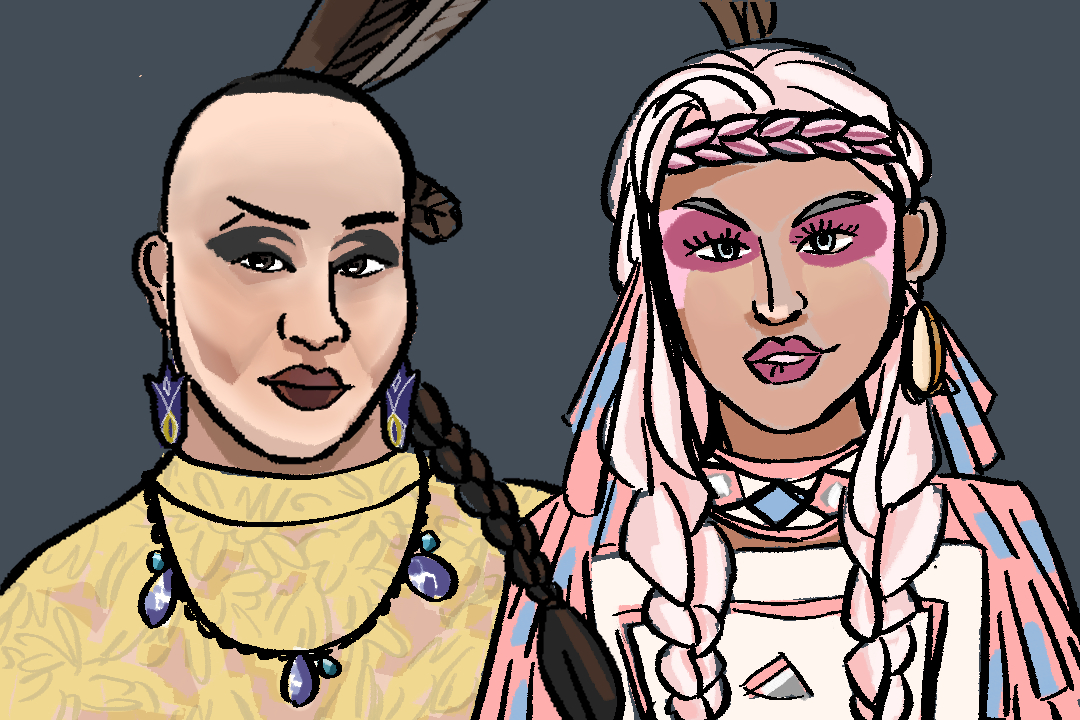I was eight years old the first time I thought about cutting all of my hair off. I stood in front of the water-speckled bathroom mirror with a hairbrush in one hand, the other securing the dark tumbleweed in a messy pile atop my head. I shoved the rat’s nest into a hat, stuffing the longer pieces in at the sides and tugging at the shorter ones in the front, trying to arrange it into a messy boy’s hair cut.
I felt a twinge of excitement when I saw the kid staring back at me in the mirror. Someone who looked like the picture of myself I had in my head. My head snapped to the bathroom door as my mom called my name from down the hall. I looked back at the person in the mirror and, with a deep sigh, pulled the hat from my head and let my hair tumble down onto my broad shoulders.
It took 13 more years to finally see my true self reflected in the mirror. The pandemic shut me inside my house with nothing to do but look inward at the many things about myself that I kept locked away for so long.
Among those many things were my feelings about gender. Thoughts about gender have always been unsettling for me. I would never let myself think too long about the discomfort I’d feel when someone called me ‘miss’ or ‘girl.’
It took me two years of therapy before I was finally able to tell my therapist that I didn’t feel like a boy, but I also didn’t feel like a girl. I told her, tears dropping from my cheeks, that I felt stupid and like I was making it up.
Telling my therapist was an awakening for me. The tears and the discomfort I felt when I looked at myself in the mirror hadn’t been enough to make me understand that something about the way my body looked didn’t match up with how I felt. Two weeks after that therapy session, I cut all of my hair off.
Personally, exploring my gender has been inextricably tied to exploring my Indigeneity. Early on in my gender navigation, I told my girlfriend that I felt that ‘non-binary’ was the right way to describe my experience of gender.
With my permission, my girlfriend disclosed to her own therapist that I’m non-binary and that she’d be using they/them pronouns when talking about me from then on. Knowing that I am Indigenous, my girlfriend’s therapist didn’t hesitate to assume that I was Two-Spirit. When my girlfriend told me this, I felt something in the pit of my stomach drop.
Reflecting on this moment now, I realize that my confusion and anger with being called Two-Spirit by a non-Indigenous racialized person was rooted in internalized racism, which is very much like the three-headed Hydra from Greek mythology. You cut one head off, and three more grow back in its place. As soon as I started to feel like I was finding my footing in my Indigeneity, uncertainty, frustration, and confusion reared their heads.
Though it wasn’t the therapist’s intention, having this label placed on me without my input or consent was a form of lateral violence — inherently rooted in the colonialist ideology and rhetoric that all Indigenous peoples look and act a certain way.
There are plenty of Indigenous people, such as Canada’s Drag Race contestant Ilona Verley and Indigenous activist Geo Neptune, who feel connected to Two-Spirit identity. As Geo Neptune said, “[Two-Spirit is] an umbrella term that bridges Indigenous and Western understandings of gender and sexuality.”
There is not one definition of what it means to be Two-Spirit. Many of these definitions and understandings vary by nation. Crucially, Two-Spirit does not necessarily mean a non-binary Indigenous person. Though an Indigenous non-binary person can also identify as Two-Spirit, one does not preclude the other.
For some, being Two-Spirit involves honouring their gender identity or identities with respect to their sexual orientation. For others, it’s about honouring the masculine and feminine parts of themselves and the spirit of each that they embody. Historically, Two-Spirit people held specific roles and responsibilities within Indigenous communities.
In Geo Neptune’s words, “Two-Spirit is not a poetic way for non-native LGBTQ people to express themselves.” It is not for one to haphazardly apply to any gender non-conforming Indigenous person whom they come across. It is deeply spiritual, meaningful, and multifaceted.


